Understanding Catalyst Poisoning In Precious Metal Catalysts: Causes, Problems, And Solutions
1 Introduction
Precious Metal Catalysts play an important role in the chemical industry, the energy sector and environmental protection. Their unique electronic structure and surface characteristics enable them to efficiently catalyse various chemical reactions. In practical applications, these catalysts are frequently compromised by contaminants, which results in decreased activity, altered selectivity and even a shorter operational life. This blog examines in detail the mechanisms and applications of precious metal catalysts, investigates the causes and effects of catalyst poisoning and proposes measures to enhance their resistance to poisoning and extend their lifespan.
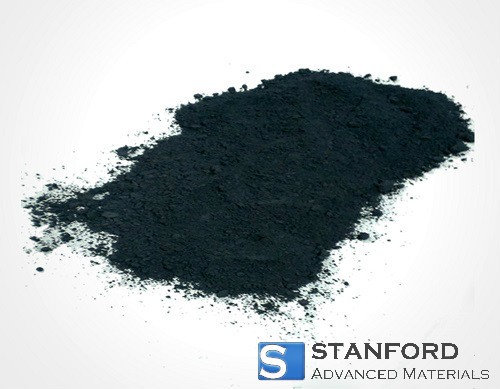
Fig. 1 Black Platinum Powder (Fuel Cell Grade), provided by Stanford Advanced Materials
2 Introduction to Precious Metal Catalysts
2.1 Mechanisms of Precious Metal Catalysts
Regarding electronic structure, precious metals (e.g. Platinum, Palladium, Rhodium, Iridium etc.) possess filled or nearly filled d-electron orbitals. These d-orbitals overlap effectively with the orbitals of reacting molecules and provide the activation energy required so that reactions occur with a reduced energy barrier. The participation of d-electrons enables the formation of intermediates with various reactants (e.g. hydrogen, oxygen, hydrocarbons etc.), thereby facilitating the reaction. The high electron density and even distribution of atoms on the surface allow the catalyst to either donate or accept electrons, which promotes the reaction.
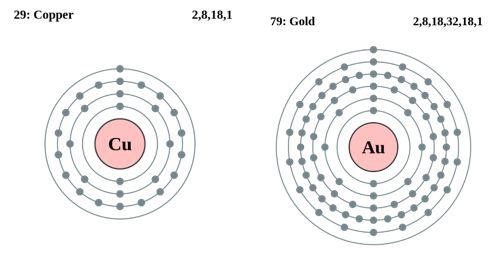
Fig. 2 Peripheral Electron Configurations of Copper and Gold Atoms
Concerning surface properties, the surface of a precious metal exhibits strong adsorption capacity which effectively adsorbs reactant molecules. This adsorption is mainly due to the strong interactions among the metal atoms and the high activity of the surface atoms. Precious metal catalysts interact with reactant molecules through both physical and chemical adsorption, providing active sites to promote the reaction. Furthermore, the surfaces of these catalysts possess the ability to reconstruct. During the reaction, the arrangement of the surface atoms may adjust to accommodate the adsorption of different reactant molecules. This capability helps the catalyst maintain efficient catalytic activity under varying reaction conditions.
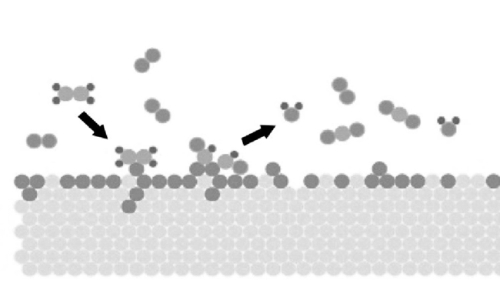
Fig. 3 Schematic Diagram of Gas Molecules Adsorbed on the Surface of Precious Metals
Precious metals also demonstrate high thermodynamic stability, maintaining both their structure and catalytic activity at elevated temperatures and under harsh chemical conditions. Consequently, these catalysts retain excellent durability and stability in various industrial processes (for example, high-temperature cracking, oxidation reactions etc.).
Precious metal catalysts catalyse numerous types of reactions such as hydrogenation, oxidation, disproportionation, coupling and more. Their versatility is primarily attributable to the abundance of active sites and their adaptable electronic structures. Different precious metals can also form alloys with other metals, thereby further regulating their electronic structures and surface properties. For instance, catalysts based on platinum–palladium alloys often exhibit a 15% higher catalytic performance in specific reactions compared to those made from single metals. Such alloys can optimise activity, selectivity and stability, thereby enhancing overall performance.
2.2 Applications of Precious Metal Catalysts
Given their catalytic effect on gas-phase reactions, precious metal catalysts are employed in gas treatment to protect the environment. Ternary catalysts, frequently used for treating automotive exhausts, employ platinum (Pt), palladium (Pd) and rhodium (Rh) as the primary components to convert carbon monoxide (CO), nitrogen oxides (NOx) and unburnt hydrocarbons (HC) in exhaust gases into carbon dioxide (CO₂), nitrogen (N₂) and water (H₂O). Platinum and palladium are also utilised in diesel exhaust treatment systems to oxidise particulate matter and nitrogen oxides emitted by diesel engines. In chemical production and refining industries, precious metal catalysts such as platinum and palladium remove harmful components from exhaust gases effectively. Furthermore, chemical sensors employing precious metal catalysts are used to detect gaseous pollutants, toxic gases and biomolecules in the environment, for example hydrogen sensors and formaldehyde sensors. Precious metal catalysts also find applications in pollutant degradation, for instance in the photocatalytic breakdown of organic pollutants during water treatment and in composite catalysts composed of platinum and titanium oxides used in the photocatalytic hydrolysis of water for hydrogen generation.
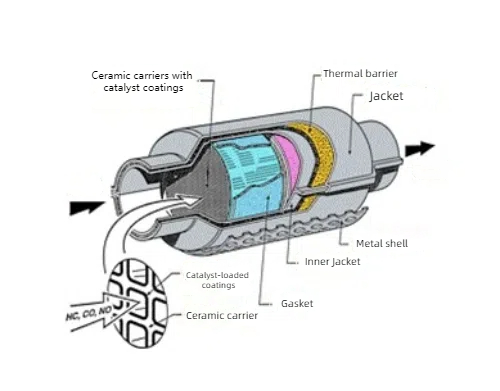
Fig. 4 Structure of the Three-Way Catalyst
In the energy sector, precious metal catalysts – particularly platinum catalysts – are employed in the electrochemical processes of water electrolysis and methanol oxidation in fuel cells to increase the efficiency of electrical energy conversion. Platinum catalysts in Proton Exchange Membrane Fuel Cells (PEMFC) catalyse the electrochemical reaction between hydrogen and oxygen at the electrodes to produce electric current and water. Catalysts based on platinum–ruthenium alloys are used in Direct Methanol Fuel Cells (DMFC) to oxidise methanol and improve the fuel cell efficiency. Platinum electrodes may also be employed for water electrolysis to generate hydrogen, thereby enhancing the reaction efficiency. Precious metal catalysts are additionally used in the conversion of biomass into high-value chemicals and fuels, for example in the hydrodeoxygenation reaction in biodiesel manufacturing.
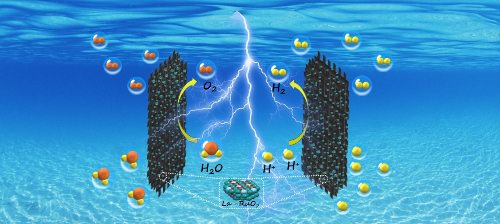
Fig. 5 Hydrogen Production from Acidic Electrolytic Water Catalysed by La-RuO₂ [5]
In chemical synthesis, precious metal catalysts are frequently applied in organic reactions. In petroleum refining, both platinum and palladium catalysts are used in hydrodesulphurisation to remove sulphur compounds from crude oil, thereby improving fuel quality. In catalytic reforming, platinum catalysts facilitate the production of high-octane petrol and aromatic compounds. In the organic synthesis sector, platinum and palladium catalysts serve as catalysts for hydrogenation reactions, substantially improving the efficiency of hydrogenation for double and triple bonds in various organic compounds. Palladium catalysts also catalyse the Suzuki coupling reaction and the Heck reaction, both of which are important in pharmaceutical synthesis and in constructing complex organic molecules. In pharmaceutical synthesis, precious metal catalysts are frequently used in key steps, for example in palladium-catalysed cross-coupling reactions for the synthesis of complex drug molecules. Platinum and palladium catalysts are also used in enantioselective catalysis to catalyse asymmetric hydrogenation reactions for the production of chiral drug intermediates, ensuring optical purity and the necessary biological activity. Precious metal catalysts have significant applications in the production of nanomaterials, such as the use of platinum and gold catalysts in manufacturing high-performance nanomaterials for electronic and optoelectronic devices.
3 Catalyst Poisoning
3.1 Definition of Catalyst Poisoning
Catalyst poisoning is defined as the loss or significant decrease in the catalytic activity of a catalyst during a chemical reaction due to the presence of specific substances (referred to as poisons or toxic agents). These toxins bind strongly to or react with the active sites of the catalyst, thereby obstructing contact between the catalyst and the reactants. This poisoning effect can result in reduced chemical reaction efficiency or even a complete cessation of the reaction.
3.2 Causes and Types of Catalyst Poisoning
There are three main mechanisms underlying catalyst poisoning.
1. Chemical Adsorption: Poison molecules adsorb strongly at the active sites, thereby preventing these sites from reacting with reactants.
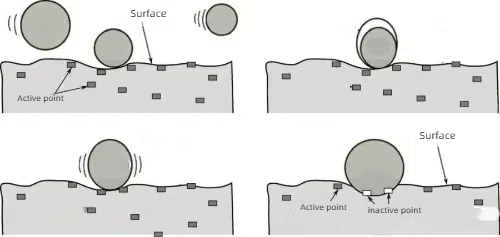
Fig. 6 Schematic Principle of Chemisorption
2. Chemical Reaction: The toxin reacts with the active components of the catalyst, forming inactive compounds that cover the catalyst surface.
3. Physical Blockade: Certain toxins deposit on the catalyst surface and block the pores or active sites physically.
The level of deactivation caused by catalyst poisoning varies according to different causes and degrees.
1. Temporary Poisoning (Reversible Poisoning): When the toxin adsorbs or binds chemically to the active centre, the bond formed is relatively weak; appropriate measures can remove the toxin, thereby restoring catalyst activity without altering its intrinsic properties. This is known as reversible or temporary poisoning.
2. Permanent Poisoning (Irreversible Poisoning): The toxin forms a very strong chemical bond with the active components, making its removal difficult and the recovery of catalyst activity unfeasible; this type is known as irreversible or permanent poisoning.
3. Selective Poisoning: After poisoning, the catalyst may lose catalytic ability for a particular reaction while retaining activity for other reactions. In this phenomenon, if the toxin selectively affects the active site for a subsequent reaction, the reaction may yield a high proportion of intermediates.
4 Issues Caused by Catalyst Poisoning
4.1 Reduced Catalyst Activity
1. Active Site Occupation: Toxins form strong chemical bonds or react with active sites on the catalyst surface, occupying these sites so that reactant adsorption and reaction are hindered. For instance, sulphides (e.g. H₂S) react with the surfaces of platinum or palladium catalysts to form platinum sulphide or palladium sulphide, rendering these active sites ineffective.
2. Surface Coverage: Toxins form a layer over the catalyst surface, physically preventing reactants from reaching the active sites. This coverage substantially reduces the effective surface area, thereby diminishing catalytic activity. For example, phosphates may form a layer on certain catalyst surfaces that impedes reactant adsorption.

Fig. 7 Passivated Catalyst Structure after Surface Coverage
4.2 Selective Variations
1. Specific Occupation of Active Sites
Certain toxins bind selectively to specific active sites, altering the activity and function of these sites. In some reactions, the reaction outcome depends on specific active sites (e.g. sites on particular crystal facets or atomic arrangements), and adsorption of contaminants preferentially on these sites may change the overall selectivity.
2. Modification of the Reaction Pathway
The presence of a toxin can modify the reaction pathway even if it does not completely block an active site. This occurs when the toxin alters the electronic or geometrical properties of the catalyst surface, thereby making the formation of certain intermediates or transition states less favourable, which in turn causes the reaction to yield a different product. For instance, in the hydroformylation of propylene, the electronic density on a rhodium catalyst may be reduced by phosphorus poisoning. Consequently, the predominant product shifts from n-butyraldehyde to isobutyraldehyde due to the altered stabilisation of intermediates.
3. Surface Rearrangement and Geometric Changes
Adsorption of contaminants may induce rearrangement of atoms or molecules on the catalyst surface, thereby altering its geometry and influencing the adsorption and reaction pathways. Such geometric modifications can lead to a reduction or complete loss of selectivity for certain reactions. In Fischer–Tropsch synthesis, iron catalysts are used for synthesising long-chain hydrocarbons. However, if sulphur poisoning causes surface restructuring, the formation of long-chain hydrocarbons decreases while methane and short-chain hydrocarbons increase. This shift in selectivity is attributable to the changes in the geometry of the active sites.
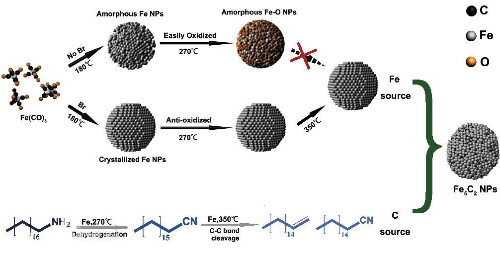
Fig. 8 Schematic Principle of the Fischer–Tropsch Process
4. Changes in the Stability of Intermediates
The presence of toxins may alter the stability of intermediates on the catalyst surface, making their desorption easier or hindering the formation of certain intermediates, thereby limiting the final product distribution. In the oxidation of methanol, for example, gold catalysts are used to produce formaldehyde, but if oxygen (O₂) or oxides (e.g. aluminium oxide) are present, the adsorbed oxygen atoms may further oxidise formaldehyde to formic acid or even carbon dioxide, thereby reducing the selectivity for formaldehyde.
5. Electronic Effects
Adsorption of toxins alters the electronic environment at the catalyst surface, influencing the adsorption energy and reaction energy barriers of the reactants. In particular, if the toxin is highly electronegative or creates an electron density difference with the metal surface, this electronic effect may substantially modify the reaction selectivity of the catalyst.
4.3 Reduced Catalyst Lifespan
Poisoning effects are often irreversible, especially when the toxin reacts strongly with the catalyst, forming a stable compound. This irreversible deactivation implies that simple treatments (e.g. regeneration) cannot restore catalyst activity, thereby significantly shortening its lifespan.
Furthermore, the action of toxins may lead to structural changes on the catalyst surface or even cause agglomeration or sintering of catalyst particles, which further reduces stability and lifespan.
4.4 Increased Process Costs
Since poisoning leads to decreased catalyst activity and lifespan, catalysts must be replaced or regenerated more frequently. This increases production costs. In addition, extensive pre-treatment of feedstocks, such as desulphurisation, dephosphorisation and denitrogenation, may be required before the reaction, thereby raising both operating costs and capital expenditure.
5 Measures to Combat Catalyst Poisoning
5.1 Catalyst Modification
1. Alloying: Alloying involves the preparation of alloy catalysts by combining precious metals with other metals to achieve improved characteristics, such as a 20% increase in tolerance to toxic species. For example, palladium (Pd) is alloyed with metals such as gold (Au) or silver (Ag) to enhance resistance to sulphur- and nitrogen-containing compounds.
Sulphides are one of the most common catalyst poisons, particularly in petroleum refining and chemical processing, where they react with active sites and lead to deactivation. Alloying palladium (Pd) with gold (Au) or silver (Ag) can significantly improve the catalyst’s resistance to sulphide poisoning. For example, palladium–gold alloy catalysts exhibit greater resistance compared to pure palladium catalysts because the presence of gold alters the electronic structure of the surface and reduces sulphur adsorption, thereby slowing the poisoning rate.
2. Surface Modification: Modification of the catalyst surface, for instance by depositing an oxide or carbon layer on the surface of the precious metal catalyst, prevents toxins from coming into direct contact with the active sites. For example, an oxide coating using aluminium oxide (Al₂O₃) or silicon dioxide (SiO₂) can block sulphides from contacting the palladium surface, thereby improving its sulphide resistance. Additionally, a carbon coating provides extra acidic or basic sites, which improves both selectivity and activity.
The addition of an oxide layer, such as aluminium oxide (Al₂O₃) or silicon dioxide (SiO₂), can improve the catalyst’s resistance to poisonous species. For example, an aluminium oxide layer on a palladium catalyst effectively blocks the contact of sulphides with active sites on the palladium surface, thereby enhancing its resistance to sulphide poisoning. Moreover, the oxide layer can offer additional reactive sites, thereby refining the catalyst’s selectivity and activity.
5.2 Pre-treatment of Feedstocks
Pre-treatment of feedstocks is a critical step in preventing the poisoning of precious metal catalysts. Effective desulphurisation, dephosphorisation and denitrogenation can significantly reduce the formation and adsorption of toxins, thereby extending catalyst life and maintaining high catalytic performance.
1. Desulphurisation: Desulphurisation refers to the removal of sulphides from the raw material prior to reaction, thus preventing catalyst poisoning by sulphur compounds. Hydrodesulphurisation is a common technology, where under high temperature and pressure, hydrogen is used to convert sulphur compounds into hydrogen sulphide (H₂S). This method effectively removes sulphur-containing compounds such as mercaptans, thioethers and thioesters from the feed, thereby reducing their toxic effect on the catalyst.
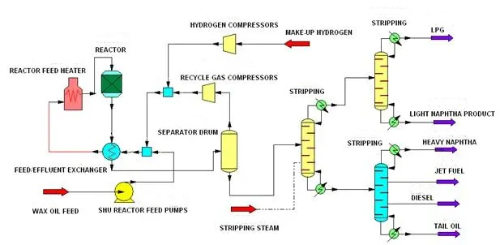
Fig. 9 Hydrodesulphurisation Process
2. Dephosphorisation: Phosphorus compounds are also a major cause of catalyst poisoning as they react with the catalyst surface, leading to deactivation. It is therefore essential to treat raw materials with a dephosphorisation agent. Such an agent chemically reacts with phosphorus compounds, forming an insoluble precipitate that is removed from the feed. In some industrial processes, calcium-based dephosphorisation agents are employed to react with phosphates and form calcium phosphate precipitates in order to achieve effective phosphorus removal.
3. Denitrogenation: Nitrogen-containing compounds are another primary cause of catalyst poisoning, particularly in petrochemical and organic synthesis reactions. These compounds bind with active sites and deactivate the catalyst. To prevent this, denitrogenation of the feed material is required.
5.3 Optimisation of Reaction Conditions
1. Control of Reaction Temperature: Reaction temperature directly affects catalyst activity and stability. The adsorption and desorption behaviour of reactants and intermediates, as well as the rate of toxin formation, vary with temperature. By optimising the reaction temperature, formation and adsorption of toxins can be reduced. For example, operating at lower temperatures reduces the production of certain toxic by-products. Many toxins (e.g. sulphides, phosphides) form more readily at high temperatures; therefore, reducing the temperature can prevent their formation.
2. Control of Hydrogen Pressure: In hydrogenation reactions, hydrogen pressure is a key parameter that directly influences both the reaction rate and catalyst selectivity. By optimising hydrogen pressure, excessive hydrogenation and the formation of toxins can be effectively reduced, thereby protecting the precious metal catalyst from poisoning. For example, in the partial hydrogenation of alkynes, excessively high hydrogen pressure may lead to over-hydrogenation to alkanes rather than the desired olefins. Given that higher hydrogen pressures may also promote the formation of toxic side-products, careful regulation is essential.
5.4 Catalyst Regeneration
Catalyst regeneration is a necessary procedure in mitigating poisoning effects on precious metal catalysts. Over time, catalysts inevitably become contaminated by toxins, leading to a decline in catalytic performance. Appropriate regeneration techniques remove toxins from the catalyst surface, thereby restoring its catalytic activity.
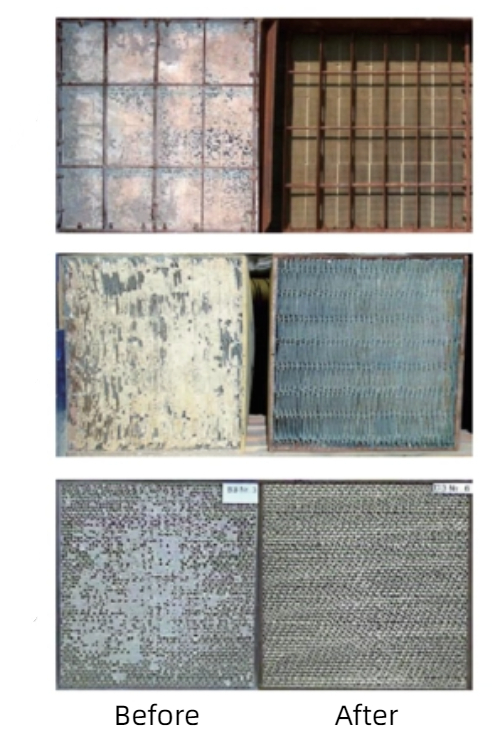
Fig. 10 Comparison of Catalyst Appearance Before and After Regeneration
1. Chemical Regeneration: Removal of toxins on the catalyst surface through chemical methods such as oxidation or reduction treatments. Typically, this involves an oxidising step followed by a reducing step. In an oxidation treatment, toxins are removed by supplying oxygen or another oxidant which converts organic toxins or other oxidisable substances present on the surface into carbon dioxide and water. For catalysts contaminated with hydrocarbon-based toxins, air or oxygen at elevated temperatures may be introduced to oxidise the deposits, thereby removing them.
For catalysts contaminated by reducing toxins, a reduction treatment with hydrogen is carried out to convert compounds such as palladium sulphide back to metallic palladium and hydrogen sulphide gas, thereby removing the toxin and restoring catalyst activity.
2. Thermal Treatment Regeneration: Removal of organic toxins or coke deposits from the catalyst surface by roasting at high temperatures to restore catalyst activity. This method includes both roasting and pyrolysis treatments.
During high-temperature roasting, the catalyst is treated at elevated temperatures so that organic toxins or carbon deposits are thermally decomposed or burnt off. For instance, a catalyst poisoned by coke deposits may be roasted to combust the coke, thereby removing the toxins and restoring activity. The roasting temperature and duration must be carefully optimised according to both the catalyst type and the toxin involved.
In pyrolysis treatment, toxins are removed by decomposing organic deposits at high temperatures into volatile products. For example, in catalysts contaminated by organophosphates, pyrolysis can decompose phosphorus compounds into gaseous products, thus eliminating the toxins and restoring catalytic activity.
5.5 Use of Selective Toxicity Inhibitors
Inclusion of co-catalysts into the reaction system can further protect precious metal catalysts. For example, small quantities of metal oxides can adsorb or transform toxins, thereby safeguarding catalyst activity. In palladium-based systems, the addition of limited amounts of lanthanum (La) or cerium (Ce) oxides can improve the catalyst’s resistance to sulphur compounds. These oxides react with the toxins and prevent their binding to the precious metal catalyst, thus extending catalyst life and maintaining efficiency.
5.6 Advanced Catalyst Concepts
1. Core–Shell Catalysts: Core–shell catalysts are engineered such that the active metal core is encapsulated within a stable shell layer. The shell, typically composed of materials with high toxin resistance such as mesoporous silica, carbon materials or aluminium oxide, permits access of reactants through appropriately sized pores while blocking larger toxin molecules. For example, palladium catalysts encapsulated with mesoporous SiO₂ display significantly higher resistance to poisoning. Here, the palladium core provides efficient catalytic activity while the mesoporous SiO₂ shell restricts entry of large molecular toxins, thereby preventing poisoning of the palladium core.

Fig. 11 The Structure of the Pt–Pd Core–Shell Catalyst
2. Single-Atom Catalysts: Single-atom catalysts are produced by highly dispersing the active metal atoms on a support so that each active site comprises a single atom. This maximises the utilisation of the metal atoms and significantly improves both activity and selectivity, while also reducing the potential for toxin accumulation around the metal atoms, thereby increasing resistance to poisoning. For example, single-atom palladium catalysts dispersed on nitrogen-doped carbon supports have each palladium atom stabilised by strong interactions at the nitrogen sites, which both improves catalytic performance and enhances resistance to poisoning.
5.7 Green Catalytic Processes
Several specific measures can be taken to mitigate the toxicity issues associated with conventional catalysts. First, the use of environmentally friendly solvents such as water or supercritical CO₂ in place of toxic organic solvents can reduce catalyst poisoning. This approach not only improves reaction safety but also decreases environmental contamination. Second, new catalytic systems are being developed, for example through research into enzyme catalysis or photocatalysis. Enzyme catalysis facilitates green chemical reactions with high selectivity and efficiency, while photocatalysis utilises light energy to drive the process, thereby avoiding the toxicity problems of conventional catalysts. These methods are supported by quantitative data showing reductions in toxin formation by up to 37% in optimised systems.
6 Conclusion
Precious metal catalysts are indispensable in the chemical industry, energy conversion and environmental protection due to their efficient catalytic performance and wide range of applications. However, the toxicity issues associated with these catalysts limit their stable, long-term operation and application efficacy. Detailed investigation of the catalytic mechanisms and toxin-induced deactivation provides several measures by which catalyst poisoning resistance and lifespan can be improved.
Firstly, catalyst modification through alloying and surface treatments can significantly enhance resistance to poisoning. Secondly, pre-treatment of feedstocks and optimisation of reaction conditions reduce toxin formation and adsorption. Additionally, catalyst regeneration and the use of selective toxicity inhibitors contribute to the recovery and maintenance of catalytic activity. Advanced catalyst designs, such as core–shell structures and single-atom catalysts, offer further strategies to minimise poisoning. Finally, the application of green catalytic processes not only reduces toxicity issues but also supports sustainable development.
Further Reading:
Applications of Precious Metal Catalysts: Insights into Powder vs. Pellet Forms
References:
[1] Qin T, Li N, Ma H, et al. Effects of Group VIII Metals on the Pyrolysis of Lignite and the Gasification of Char Catalysed by a Ca-Based Catalyst, Fuel, 2024, 372.
[2] Lysne A, Saxrud I, Snidaro LR, et al. Pt, Pd and Rh Promoted Ni-Co/Mg(Al)O Catalysts for the Steam Reforming of Tars from Biomass Gasification, Journal of Catalysis, 2024, 436.
[3] Nejadmoghadam E, Achour A, Öhrman O, et al. Stabilisation of Fresh and Ageing Simulated Pyrolysis Oil by Mild Hydroprocessing with Precious Metal Catalysts, Energy Conversion and Management, 2024, 313.
[4] Li L, Chen T, Zhang L, et al. Recent Progress on Ni-Based Nanomaterials as Promoters for Enhancing the Hydrogen Evolution Reaction Performance of Precious Metal Catalysts, Journal of Alloys and Compounds, 2024, 998.
[5] Yun W, Rui Y, Qiang Z, et al. La-RuO₂ Nanocrystals with Efficient Electrocatalytic Activity for Overall Water Splitting in Acidic Media: The Synergistic Effect of La-Doping and Oxygen Deficiency, Chemical Engineering Journal, 2022, 439.

 Bars
Bars
 Beads & Spheres
Beads & Spheres
 Bolts & Nuts
Bolts & Nuts
 Crucibles
Crucibles
 Discs
Discs
 Fibers & Fabrics
Fibers & Fabrics
 Films
Films
 Flake
Flake
 Foams
Foams
 Foil
Foil
 Granules
Granules
 Honeycombs
Honeycombs
 Ink
Ink
 Laminate
Laminate
 Lumps
Lumps
 Meshes
Meshes
 Metallised Film
Metallised Film
 Plate
Plate
 Powders
Powders
 Rod
Rod
 Sheets
Sheets
 Single Crystals
Single Crystals
 Sputtering Target
Sputtering Target
 Tubes
Tubes
 Washer
Washer
 Wires
Wires
 Converters & Calculators
Converters & Calculators
 Write for Us
Write for Us
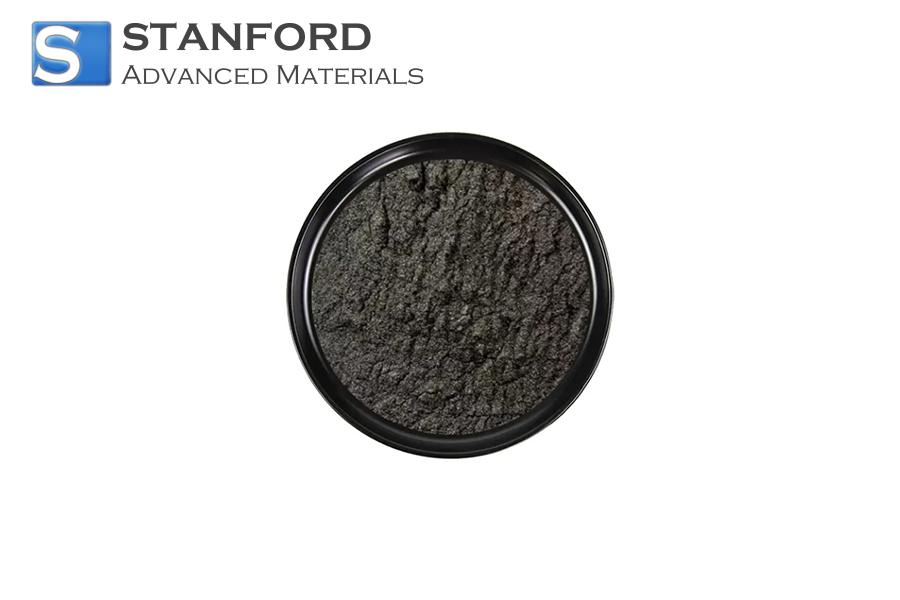
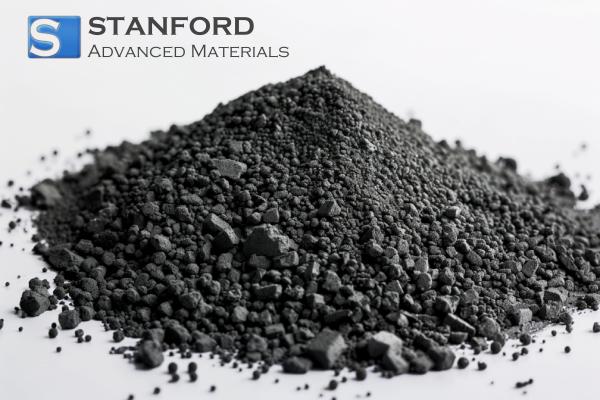
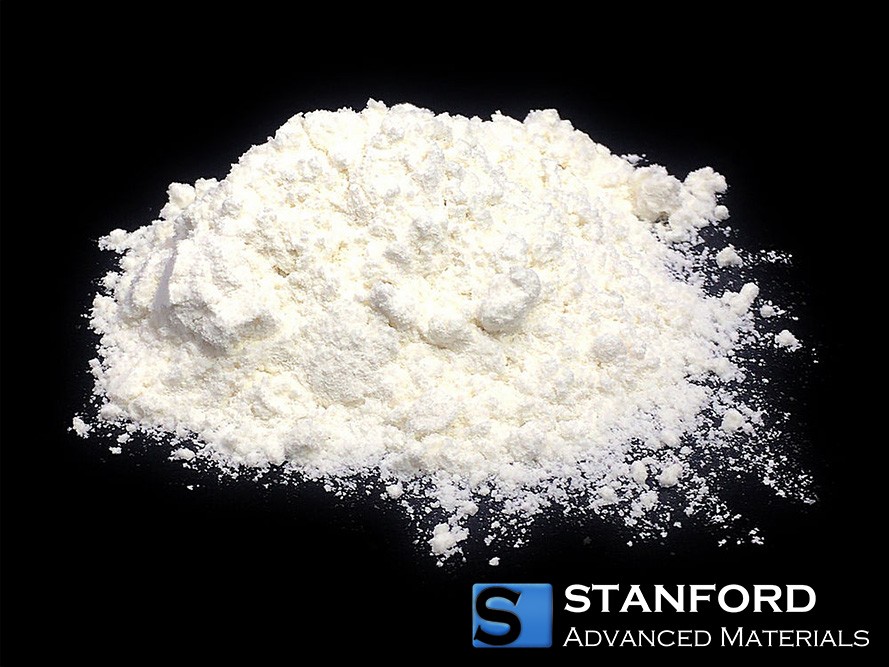
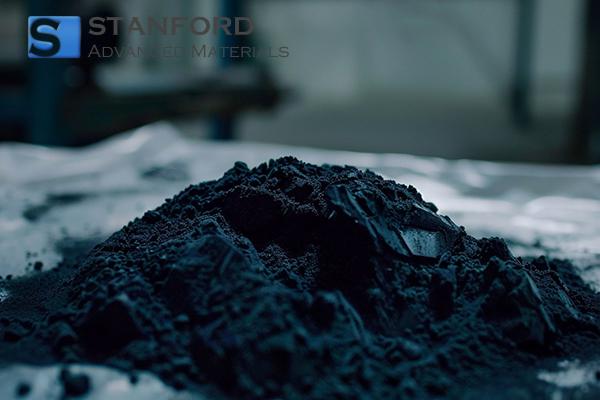
 Chin Trento
Chin Trento



